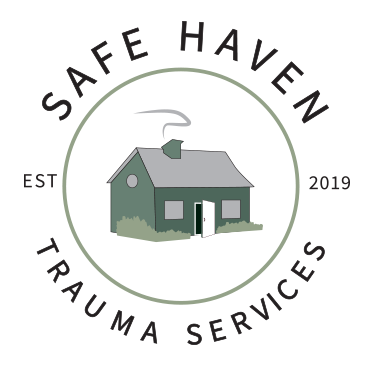Containment Skills for Trauma Therapy
Trauma symptoms can come out of nowhere. Typically, they pop up when you don’t expect them and they can happen at very inconvenient times. One of the first things I teach my clients is containment skills. Although feeling your feelings is essential to trauma therapy, it is usually very difficult to feel everything between sessions without a break. Additionally, some people avoid their feelings at all costs because they fear that if they let their sadness out, they will not be able to stop it. Trauma survivors also experience things such as body memories, flashbacks, and nightmares. Below are several containment skills to help contain intense emotions, sensations, memories, thoughts, etc. between sessions. Note: this is not something you are using to throw distressing feelings, memories, thoughts, or sensations away forever, RATHER, you are containing these things until you are ready to work on them in therapy.
*Full-disclosure: These skills are not a substitute for therapy.
1. The Vault: (warning: if you have any trauma around being locked up, this is likely not the best containment exercise for you) Imagine a vault, something similar to what you think of as a bank vault, but use your imagination. This can be whatever you imagine because it is something you are creating with your mind. Imagine the color, the shape. Imagine walking up to the vault and touching the outside. Is it cold, warm, hot? What is the texture like? Smooth, rough, patterned? Now imagine walking around the outside of the vault. Make sure there are no holes anywhere. Now, open the door of the vault. Notice how thick the walls need to be for you to feel that everything is contained. Feel free to walk inside and check for holes again. Notice whatever is distressing to you going into your vault. Some people like to imagine separate compartments inside of the vault with separate combinations or keys. Don’t try to force anything into the vault, just notice whatever is distressing going into it. When you feel that everything is contained, close the vault door and lock it. Know that you are the ONLY person with the combination or key to this vault. No one else has access or can ever get into your vault. Warning: if you have any trauma around being locked up, this is likely not the best containment exercise for you.
2. The container: Imagine a container of your choosing. It can be anything. It might be a mason jar, a box, a safe, or any other type of container. Imagine it being as big as it needs to be to contain everything that is distressing to you. What color is it? What’s the temperature? How thick are the walls of the container? Now imagine whatever is distressing to you, entering the container. If you struggle with visualization, you can use an actual container. You can write distressing memories, sensations, emotions, and/or thoughts on little slips of paper and put them in your container. Again, if you are using your imagination, don’t try to force distressing things into this container, just notice them going in. Once you feel that everything is contained, close the container. Know that this exercise is available to you whenever you need it.
3. Journal: use a journal for containment. Whenever something distressing comes up, write about it in your journal. Keep this to a certain length of time, perhaps 5, 10, or 15 minutes. After that period of time is over, close the journal. Use the act of closing the journal as a symbolic exercise of containment. Once you close the journal you are leaving distressing emotions, memories, sensations, and thoughts there. Put the journal in a drawer and walk away. Try something to self-soothe afterward to get your mind off what you just wrote.
Containers do leak. That’s okay, these exercises are not perfect and most skills will not work 100% of the time. The key is practice. Practice these skills when something is mildly bothering you. This will make it easier to use when something really triggering happens. If your container leaks, try the skill again.
I provide attachment-based trauma counseling in Nashville, Tennessee, using EMDR and other trauma-informed therapies. Containment is part of Phase 1 of trauma therapy. Contact me today, if you would like to learn more.

